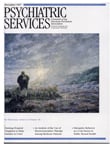Handbook of Psychosomatic Medicine
It is not every day that a serious text on psychosomatic medicine reaches the professional bookstore. It was therefore with some excitement that I anticipated the publication of this volume in 1994, when it was first announced by Karger Publishers. Ultimately published by International Universities Press in 1998, it has been worth the wait. However, little has changed from its initial proposed table of contents in 1994, except for the elimination of a section on psychobiological mechanisms and the addition of a 14-page appendix on diagnostic criteria for use in psychosomatic research. Nothing is said of the delay, but with a topic as broad and deep as the whole field of psychosomatic medicine, it is possible that the editors thought long and hard about what to leave in and what to excise; furthermore, the ways of the publishing business are sometimes mysterious.
Nonetheless, what we now have is a well-constructed, thoughtfully edited, and appealingly designed book with a spectrum of chapters. All are papers reprinted from the journal Psychotherapy and Psychosomatics, a publication with which both editors are affiliated, Fava as editor-in-chief. The papers are surprisingly consistent in style for such a diversity of writers, numbering among them many prominent names in the field.
The first of the book's three main sections, on "fundamental issues," contains 11 chapters with prefatory material suggesting, perhaps unintentionally, that the editors were ambivalent about whether the content reflects "trends" or "issues." Because the predominance of references are prior to 1993, the "reassessment of the psychosomatic field of the nineties" aspired to by the editors could not be achieved.
The second section contains 12 chapters on "clinical issues," including interesting and comprehensive discussions of the usual psychosomatic fare of gastrointestinal, cardiovascular, renal, and endocrine diseases. Less commonly found in psychosomatic texts are the intriguing chapters on psychodermatology, psycho-oncology, the psychosomatics of otorhinolaryngology, and the temporomandibular joint syndrome. An excellent chapter on psychological reactions to medical procedures will enhance the work of consultation-liaison psychiatrists, health psychologists, and others working in general medical settings; it is important that at a time when medicine is accused of becoming more impersonal, the focus is kept on the patient's experience of "patienthood."
The third section addresses treatment and, of necessity, is somewhat truncated in the seven chapters allotted to it. And it is bound to have some redundancy with the section on clinical issues. The section does, however, emphasize some of the "newer" modalities—of the sixties, seventies, and eighties—like cognitive-behavioral approaches, hypnosis, and psychopharmacotherapy. Chapters on compliance and supportive psychotherapy will add appreciably to the armamentarium of beginning mental health professionals working at the interface of psychiatry and medicine.
I have saved the best for last, like a rich dessert after a fine meal, although it appears as the introduction to the book. It is the tour de force by George Engel, writing with his usual perspicacity, clarity, and charm. In a gem of lucid prose, Engel asks, "How much longer must medicine's science be bound by a seventeenth century world view?" Besides its intensely human autobiographical content, the chapter is itself a treatise on the scientific method, with arguably more relevance to research than the book's appendix intended for that purpose. It is somewhat curious, and even amusing, that this major figure in the development of psychosomatic medicine has managed to write his entire chapter without once using the phrase (unless I missed it) "psychosomatic medicine."
One last carping criticism. My dictionary says that a handbook is "a concise reference book covering a particular subject or field of knowledge" or "a manual capable of being conveniently carried as a ready reference." Weighing in at 780 pages, Handbook of Psychosomatic Research is neither concise nor easily carried, not to mention the difficulty of reading it in bed.
It is, nonetheless, one of the better volumes reflecting the richness, complexity, and endless research opportunities for the interested student of mind-brain-body relationships. For anyone unable to keep up with all the periodicals, which is most of us, having these papers bound together as an available reference is a useful and valuable resource for which the editors are to be congratulated.
Dr. Lipsitt is medical director of the Institute for Behavioral Science in Health Care at Mount Auburn Hospital in Cambridge, Massachusetts, and professor of psychiatry at Harvard Medical School.



